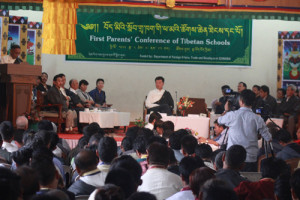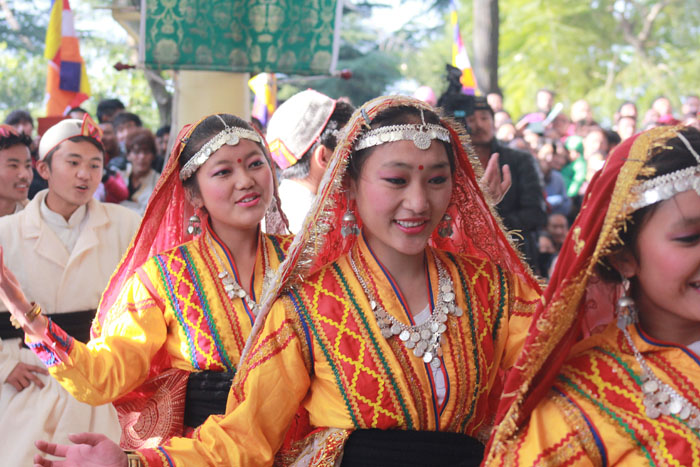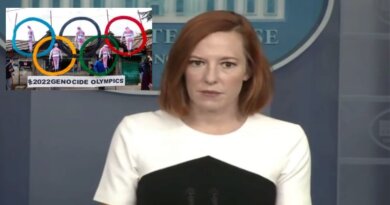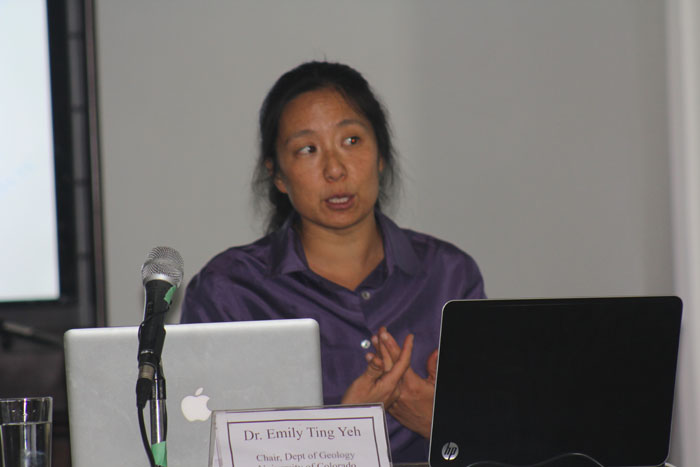46th Protest: Tibetan Activists Demand Guimet Museum Restore “Tibet” Name
By Tenzin Chokyi

DHARAMSHALA, 24 Nov: Students for a Free Tibet (SFT) France and the Regional Tibetan Youth Congress staged their 46th protest on Sunday in Paris, demonstrating in front of the Guimet Museum over its continued refusal to remove the Chinese colonial term “Himalayan World” from its Nepal–Tibet exhibition. Tibetan protesters argue that the museum’s 2024 nomenclature change is part of a broader pattern aligned with China’s ongoing colonial occupation of Tibet and its efforts to erase the name Tibet and its identity.
In a speech shared on SFT-France’s Instagram, 16-year-old Tibetan activist Yangchen from SFT said, “This act is not neutral, it is not trivial, and it is certainly not without consequences. Because erasing a name is never just about changing a label. Erasing a name is erasing a face, its memory, and its people. Replacing Tibet with vague expressions like ‘Himalayan World’ dilutes what forms the very soul of a civilisation. It blurs the singularity of an entire nation. It turns living, suffering and resisting people into this abstract, harmless category.”
Earlier this year, Tibetan activists served a legal notice to the museum and the French Minister of Culture (March 2024), demanding that Tibet be reinstated in its rightful place within the museum’s collections of Tibetan art. Similarly, in September, UN experts also raised serious concerns over the erasure of Tibet’s name in French museums, seeking clarification from both the museum and the French government regarding alleged collaboration with Chinese authorities.
Despite these interventions, Tibetan groups report receiving no meaningful response. “We will continue to advocate for the rightful cause. As for today, it’s really cold and it rained a lot, but our will has not been defeated. No matter the weather, we will continue our advocacy,” the activist from SFT-France said in a video message posted online.
The Musée Guimet reopened its Nepal–Tibet gallery under the new label “Himalayan World” in 2024 while dedicating the year to China as part of the Franco-Chinese Cultural Tourism Year—an event critics say marks a shift toward accommodating Chinese narratives in French cultural institutions.
The museum claims the change arose from a “broader reflection,” arguing that the goal was not to erase Tibet but to “make the cultural coherence of certain Asian spaces clearer and more accessible to non-specialists.” However, critics counter that “Himalayan World” is a vague and imprecise geographic category that conveniently avoids representing Tibet as a distinct nation.
The Tibetan activists and critics alike argue that the term encompasses diverse regions across Bhutan, India, Nepal, and Tibet, making it unsuitable for accurately representing Tibetan culture. Furthermore, they note that only about a quarter of historical Tibet lies within the Himalayan range, making the label misleading.
China’s politics of nomenclature regarding the occupied region is widely viewed as a deliberate attempt to distort Tibet’s history as an independent nation prior to its full occupation in 1959. In 2023, China officially replaced the name “Tibet” with the Chinese term “Xizang,” which refers only to the so-called Tibet Autonomous Region (TAR) created in 1965—thereby excluding large portions of Kham and Amdo, integral regions of the formerly independent Tibet.
Scholars of Tibetan studies contend that this name change echoes the colonial practice of renaming territories to assert dominance and to erase indigenous identities and histories. Tsering Shakya, a renowned scholar on modern Tibet and its relationship with China, has argued that “China’s efforts to rename Tibet aim to subsume Tibetan identity within a Han-centric narrative to erase the region’s distinct culture and history and to marginalise Tibetan voices, their heritage, and their sovereignty”.






